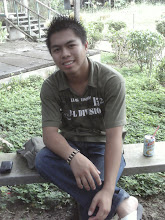Kaamatan
From Wikipedia, the free encyclopedia
The Kaamatan festival is an annual event in the cultural life of the kadazandusuns of sabah since time immemorial. In its deepest sense, Kaamatan festival is a manifestation of creator and Creation relationship, as well as Inter-Creations relationship. It embodies the principal acts of invocation of divinities, appeasing, purification and restoration, re-union of benevolent spirits, and thanksgiving to the Source of All. It is part of a complex wholesome Momolian religious system centered on the paddy rites of passage and the life cycle of bambarayon - the in-dwelling spirit of paddy.Appeasing is done in respect of bambarayon, Deities, Divinities and Spirits, who may have been hurt by human wrongful, acts. Purification is performed in respect of human and spiritual needs for forgiveness followed by resolutions to make themselves worthy of the gifts of life from God. Restoration in necessary to ensure the health and well being of SUNIL, mankind and other spiritual beings. Re-union is realised in respect of human needs to be integrated in body, mind and spirit within the concept of the seven-in-one divinity in humanity, as well as re-union of Bambarayon with human Sunduan. Finally Thanksgiving is observed as befitting for all creations to express their gratitude and appreciation for the gifts of life (through Huminodun) and all life supportive system on earth that their Creator lovingly and generously gave them.
Contents |
Etymology
The word Kaamatan is derived from the root word tomot, a Kadazandusun term for harvest. In the context of this article, Kaamatan refers to the paddy-harvesting period, which involves a series of traditional rituals culminating finally to the Kaamatan (harvest) festival. Tadau kaamatan is a cele bration for the people who celebrate tadau kaamatan.Rituals
The festival is observed in 6 rituals stages:The Kumogos Ceremony
Before a harvest begins, a bobohizan/Bobolian (ritual specialist) will select and tie-up 7 stalks of the best rice from a plot of rice field. These stakes of rice will only be harvested after the particular plot of field has been completely harvested. The 7 stalks of rice will then be scattered all over the rice field. This gesture is to inform the other spirits who may be present among the rice field not to make any disturbance when the harvesting work is to commenced and each of them will be given something after the harvest.
The Kumotob Ceremony
From the area which has not yet been harvested to the Bobohizan/Bobolian will select 7 stalks of the best rice. The selected stalks are then tied up together and placed in a tadang (a type of basket for keeping rice). The rest of the rice in the field are then harvested and the rice are turned into seed for future planting season.
The Posisip Ceremony
The Bobohizan/Bobolian goes to a rice hut together with the 7 stalks of rice which is tied up and placed in the tadang. While reciting chants she takes out the bundle of rice stalks and insert them in a bamboo pole kept in the tangkob. The recital of the chants is to call the spirit of the rice to stay in the rice hut until the next planting season, i.e. when the rice spirits are called to the rice field again.
The Poihib Ceremony
In the rice hut the Bobohizan/Bobolian carefully pours the rice into the tangkob. This process is repeated for a number of times until all the rice has poured into the tangkob. The Bobohizan/Bobolian then recite chants appealing to the rice spirits to keep watch over the rice stored in the tangkob.
The Magavau Ceremony
This is the most important ceremony in the sequence of events of the harvest festival. This focuses in the restoration of Bambarayon as well as offering food to Bambarayon. In the olden days, the Magavau ritual is performed in the padi field on the night of the first full moon after the harvest. Nowadays, this ritual is carried out in the house of the owner of the field.
The Humabot Ceremony
This is the final stage of the observation of the harvest festival and is in the form of merry-making and entertainment. This ceremony is now celebrated at village, district and state levels annually (30 - 31 May). A variety of entertainment and activities in the form of dances and traditional sports are held and the climax of the event is the selection of the unduk ngadau (Harvest Festival Queen). The Unduk Ngadau symbolizes Huminodun, the sacrificed daughter of Kinorohingan.
The rituals described above are typical of the Kadazan-Dusun of the Penampang-Papar area. Other dusunic groups, the murutic groups of the interior and the paitanic groups in the east have different rice harvest rituals. For example, the Lotud Dusun have a series of eight ceremonies - Mansalud, Monuras, Tumakau, Matang, Mongoi Rumali, Mogimpuun, Sumondod and Monumbui. The essence of this ceremony however is the same, that is of thanksgiving for a plentiful harvest



 Pom Pom Island Resort accommodation comprises beach front chalets, garden view chalets and water bungalows, constructed according to traditional architectural styles to blend in with the surroundings without disturbing the island’s natural vegetation.
Pom Pom Island Resort accommodation comprises beach front chalets, garden view chalets and water bungalows, constructed according to traditional architectural styles to blend in with the surroundings without disturbing the island’s natural vegetation. Downbelow offers competitive rates for Pom Pom Island Resort accommodation packages. Please conact us for an accommodation package quote, which includes the following:
Downbelow offers competitive rates for Pom Pom Island Resort accommodation packages. Please conact us for an accommodation package quote, which includes the following: Additionally, the diver package also includes the following:
Additionally, the diver package also includes the following:











